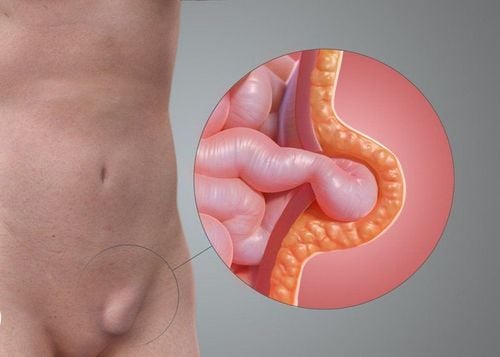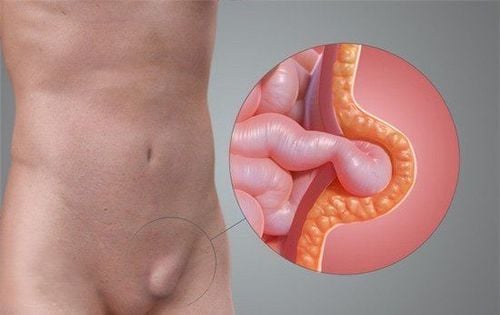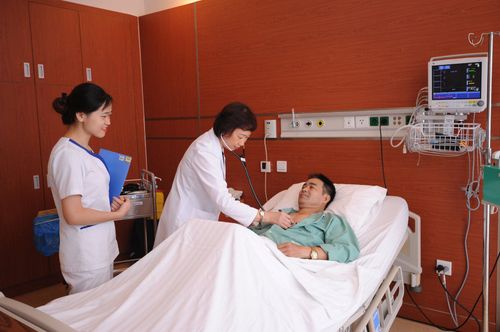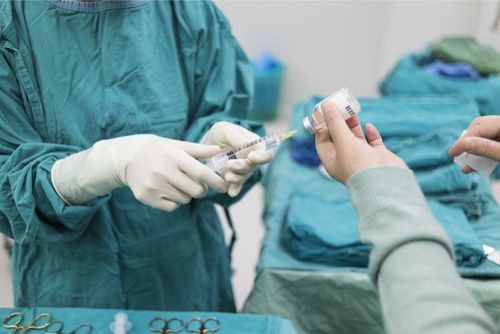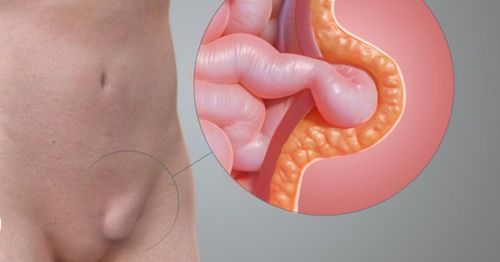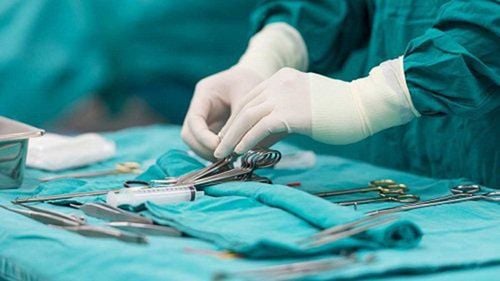This is an automatically translated article.
Femoral hernia is a condition in which the abdominal organs pass through the foramen of the commissure below the inguinal ligament, which is the weak point of the base of the triangle of Scarpa down the anterior aspect of the femur. Hernias are very rare (about 6% of all hernias), and are more common in women. Very rare in children.
1. Treatment method for femoral hernia
1.1 Test method and diagnosis of femoral hernia The doctor will make a diagnosis by doing a general examination, considering the symptoms that the patient has and excluding the case of other conditions with similar symptoms. inguinal gastritis, inguinal lymphadenitis, cold abscess, venous bulge.
1.2 Effective treatment of femoral hernia Wearing a bandage is only a temporary measure to prevent complications, applied to elderly and frail patients who cannot be operated on.
Surgery is the definitive treatment.
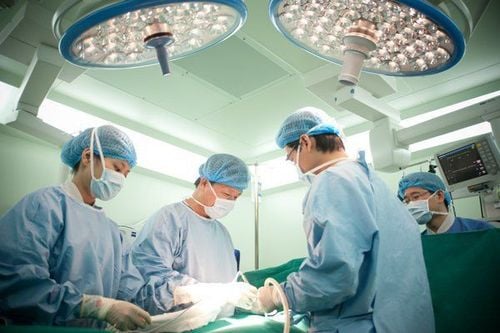
Phẫu thuật là phương pháp điều trị triệt để thoát vị đùi
2. Surgical technique
The incision may be in the Scarpa triangle, along the anterior surface of the bulge and up to the femoral arch; Surgery can be performed according to the inguinal hernia line, from above the femoral arch. Skin incision: A straight incision through the femoral arch to just above the hernia will reveal the lower thigh arch and the superior oblique muscle fascia. Dissection of the hernia sac: Separation of the fibrous layer to the neck of the hernia sac. Femoral arcectomy: The herniated neck will be exposed. Open the hernia bag to check the hernia viscera and push it up into the abdomen. Stitch through the neck of the hernia sac, cut the hernia sac under the binding and attach it to the abdominal wall. Restoration of the abdominal wall: Suture the Cooper ligament at the crest with the minor oblique muscles, transverse muscles, and the great oblique fascia.
3. The case of strangulated femoral hernia
To remove the hernia sac, the femoral arch must be removed, which can go from the upper abdomen or low incision in the thigh. Open the hernia sac, keep the strangulated bowel loop outside, carefully dissect the hernia neck at high altitude. Expose to clearly see the strangulation groove, examine the bowel above and below the strangulation; If the intestine is still good, it is pushed back into the abdomen, if the intestine is necrotic, it is removed. Abdominal wall rehabilitation: Sew the Cooper ligament with the transverse, minor obliques, and major obliques to seal the thigh ring. When suturing, care should be taken to avoid suturing the adjacent blood vessels (femoral vein, epigastric artery, obturator artery...). Vinmec Ha Long International General Hospital has successfully performed femoral hernia surgery for a 63-year-old patient. Before surgery, the patient is given nutrition to be in good condition ready for surgery. During the surgery, the doctors performed general anesthesia with regional anesthesia - an advanced analgesia method that not only relieves pain but also reduces cardiovascular and respiratory complications and restores early digestive function. After surgery, the doctor gives the patient an early meal, encourages gentle exercise and daily rehabilitation exercises.
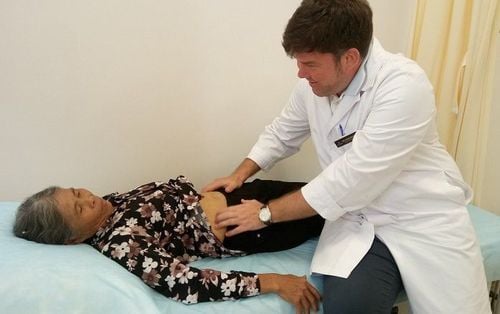
Bệnh nhân được điều trị thoát vị đùi thành công tại Bệnh viện Đa khoa Quốc tế Vinmec Hạ Long
Thanks to the attentive care of the doctors and the method of enhancing postoperative recovery after surgery at Vinmec Ha Long, the patient recovered quickly. Only 1 day after surgery, she was able to eat and exercise lightly, and was discharged after 5 days.
(ERAS) is an early recovery program after surgery being applied by many hospitals around the world, and has started to be applied in some hospitals in Vietnam. Patients will be applied comprehensive nutritional care methods to prepare well for surgery, restore function before and after surgery, choose the optimal surgical method and apply methods to reduce pain. advanced pain. Therefore, ERAS minimizes complications, helps patients recover quickly after surgery and discharge early.
Please dial HOTLINE for more information or register for an appointment HERE. Download MyVinmec app to make appointments faster and to manage your bookings easily.




